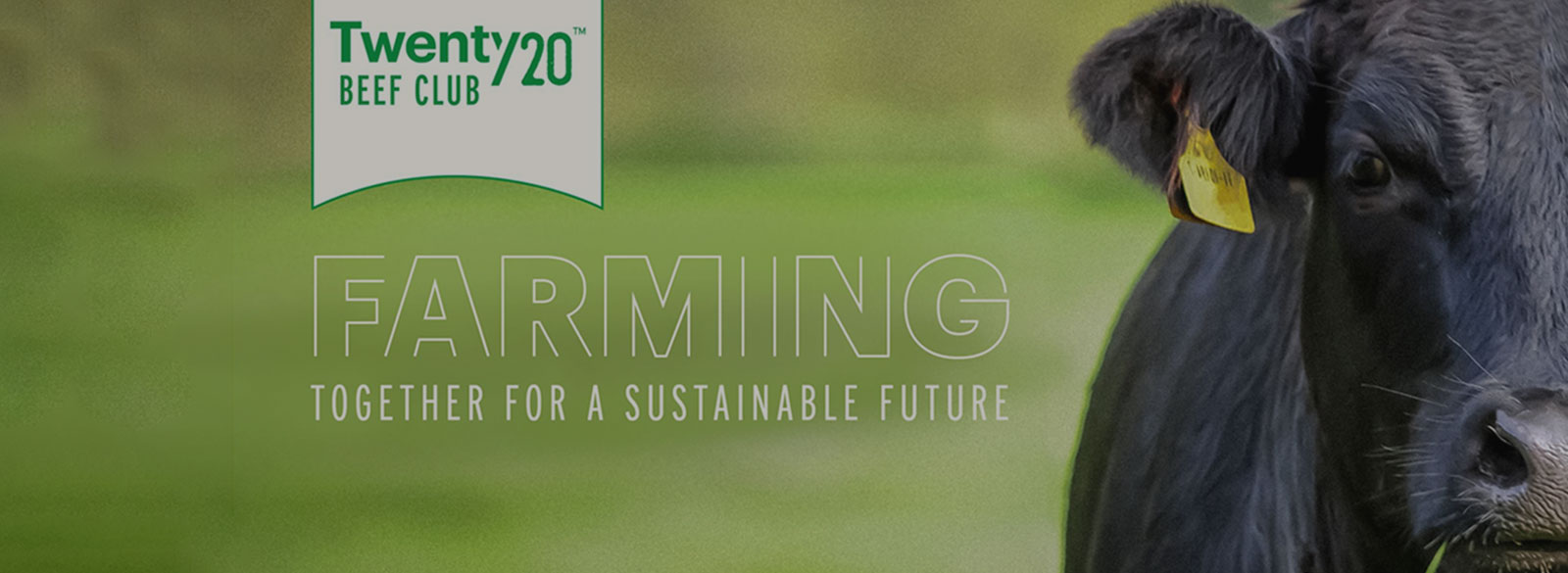
https://ec.europa.eu/eip/agriculture/en/find-connect/projects/bovine-beef-innovation-network-europe
JJ Kavanagh runs a suckler beef farm and also buys in some calves from the dairy herd for rearing and fattening. In the 2019/2020 season he joined the Twenty20 Beef Club, which is an initative from Glanbia (a dairy co-operative) and Kepak (a meat processing company ). The “Twenty20 Beef Club” affords members a guaranteed market for their heifers and steers with a predictable and transparent pricing formula at time of slaughter; a production blueprint supported by safe and secure high-quality farm inputs and leading-edge technical advice. The objective is to provide more certainty on the finished price and reduce the risk associated with price and the final value of the animals, which can be up to 2 years after the purchase of the calf. At an average beef market price of €3.75/kg, Twenty20 club members can secure a price through bonuses and premiums of up to €4.28/kg.

The major challenge was the high beef price flucation resulting in high risks and income losses. By joining the "Twenty20 Beef Club" and purchasing calves from designated suppliers it will take up to 2 years to implement the system.
In addition to the benefits of a more secure pricing system and cash flow benfits, Glanbia Ireland and Kepak have designed the initial five-year Programme to meet ambitious economic and environmental performance targets. These include:
– A reduction in the average age at slaughter of Club cattle to 24 months on average;
– A reduction in the average Carbon footprint of Club farms through the use of methane reducing feed additives, reduction in the average age of slaughter, improved feed conversion efficiency, reduced feed waste and improved fertility across the herd;
– An improvement in the eating quality attributes of the Club meat through a combination of better genetics; nutrition management and optimum processing techniques;
– An increase in the proportion of dairy bred cattle meeting market specified targets;
– An increase in beef output and sales value per hectare through enhanced on farm efficiencies, breeding, feeding, grassland management, animal health/welfare and slaughter preparation and selection.
Success factors were more certainty around final price in the beef system and reduced financial risk.
Lessons learned are;
1. It is possible to design a blueprint to reduce risk around beef price and provide the primary producer with more financial certainty
2. The system provides the finishing farmer with a choice on the quality and type of calf that can be purchased
3. The system provides for better cash flow planning in beef systems that are usually poor on income and cash flow.
The impacts of the system are the following:
- Improved price for beef produced and reduced price risk, leading to increased income.
- Reduced feed waste and improved herd health through better calf purchase.
- A reduction in the average age at slaughter of Club cattle – to 24 months on average; improved feed conversion efficiency, reduced feed waste. An improvement in the eating quality attributes of the Club meat through a combination of better genetics; nutrition management and optimum processing techniques;
– An increase in the proportion of dairy bred cattle meeting market specified targets.
- A reduction in the average Carbon footprint of Club farms- through the use of methane reducing feed additives, reduction in the average age of slaughter, improved feed conversion efficiency, reduced feed waste and improved fertility across the herd
For further information:
https://www.kepak.com/farming/twenty20/
Author: Paul Crosson - TEGASC